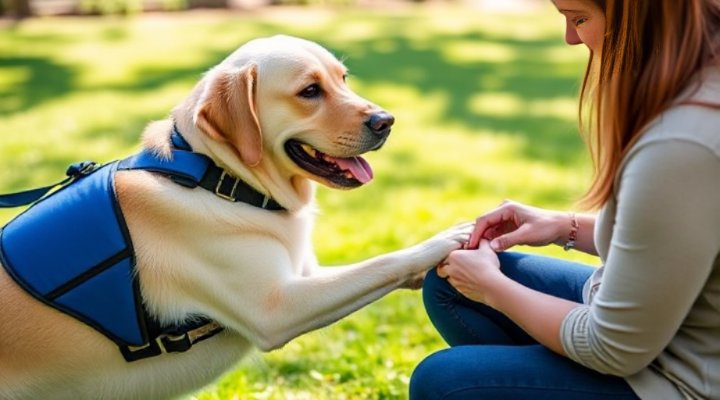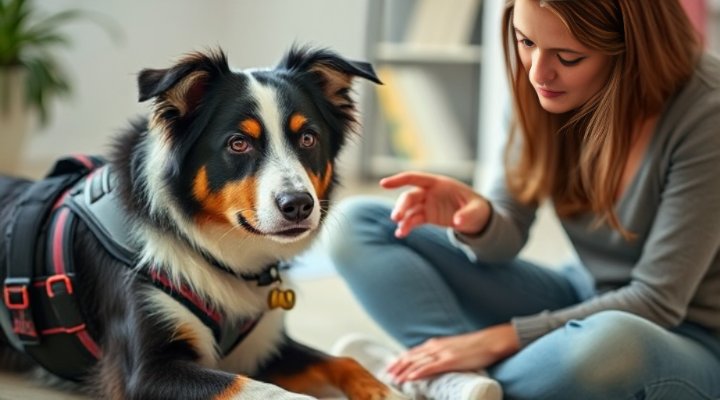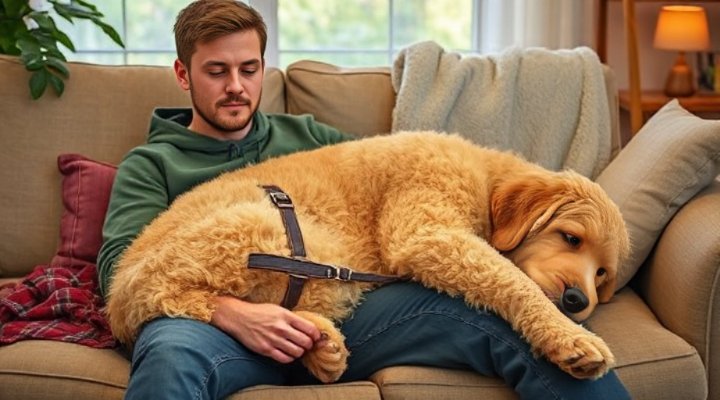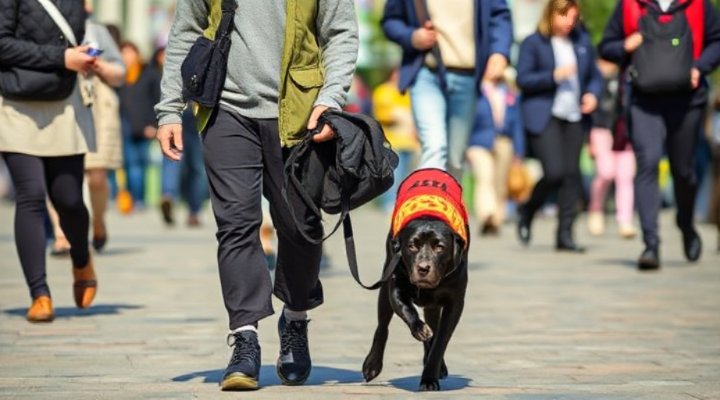Service dog training for anxiety is becoming increasingly recognized as an effective way to help individuals manage their symptoms and improve their daily lives. These specially trained dogs can perform tasks that directly mitigate anxiety symptoms, providing both practical support and emotional comfort.

Understanding Service Dogs for Anxiety
Unlike emotional support animals, service dogs for anxiety are trained to perform specific tasks that help their handlers manage anxiety disorders. According to the Americans with Disabilities Act, service animals must be individually trained to do work or perform tasks for people with disabilities.
Some common tasks anxiety service dogs perform include:
- Providing deep pressure therapy during panic attacks
- Interrupting repetitive or self-harming behaviors
- Creating physical space in crowded areas
- Alerting to rising anxiety levels before full attacks occur
- Retrieving medication or emergency phone

Choosing the Right Dog for Anxiety Service Work
Not every dog is suited for service dog training for anxiety. The ideal candidate typically has:
- A calm, stable temperament
- High intelligence and trainability
- Moderate energy levels
- Strong bonding tendencies
- Good health and physical stamina
Breeds like Labrador Retrievers, Golden Retrievers, and Poodles are often successful in this role, but mixed breeds can also excel with the right temperament. For more information on choosing the right dog, check out our guide on dog training basics.

Basic Training Foundations
Before specializing in anxiety-related tasks, service dogs need solid foundational training. This includes:
- Basic obedience (sit, stay, come, heel)
- Advanced obedience (long stays, off-leash reliability)
- Public access training (behaving calmly in all environments)
- Task-specific training
Remember, training a service dog is a significant commitment that typically takes 1-2 years of consistent work. Many handlers choose to work with professional trainers or programs, while others opt for owner-training with guidance.

Specialized Anxiety Task Training
The most valuable aspect of service dog training for anxiety is teaching the dog to recognize and respond to anxiety symptoms. This involves:
- Teaching the dog to recognize early signs of anxiety (increased heart rate, pacing, etc.)
- Training specific responses to these signs
- Proofing behaviors in various environments
- Maintaining the dog’s skills through regular practice
One of my favorite training moments was when my dog first recognized my rising anxiety before I did and initiated deep pressure therapy without cue. That moment of connection was truly life-changing.

Legal Considerations and Public Access
In the United States, service dogs have public access rights under the ADA. However, it’s important to understand that:
- Businesses can only ask two questions: Is this a service dog? What tasks is it trained to perform?
- Service dogs must be under control at all times
- Handlers are responsible for any damage or disruption caused by their dog
For more detailed information, the ADA’s service animal FAQ is an excellent resource.
Maintaining Your Service Dog’s Skills
Service dog training for anxiety doesn’t end when the initial training is complete. Ongoing maintenance includes:
- Daily reinforcement of commands and tasks
- Regular public access practice
- Continuing education for new situations
- Health and wellness monitoring
Remember, a well-cared-for service dog is more effective and has a longer working life. Proper nutrition is essential – consider our reviews of high-quality dog foods to keep your partner in top condition.
Related Keywords
service dog training, anxiety support dog, emotional support animal training, psychiatric service dog tasks, service dog laws, best dog breeds for anxiety service work, how to train a service dog for anxiety, service dog certification, service dog vest, service dog public access rights
